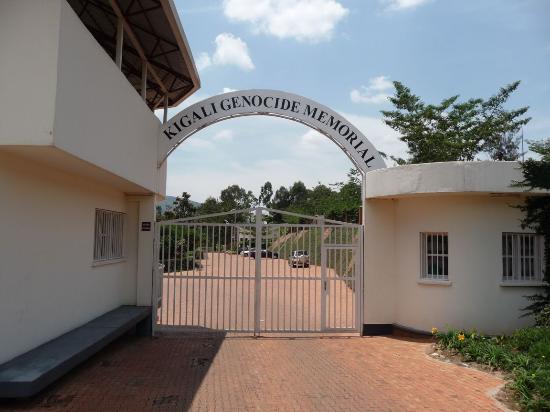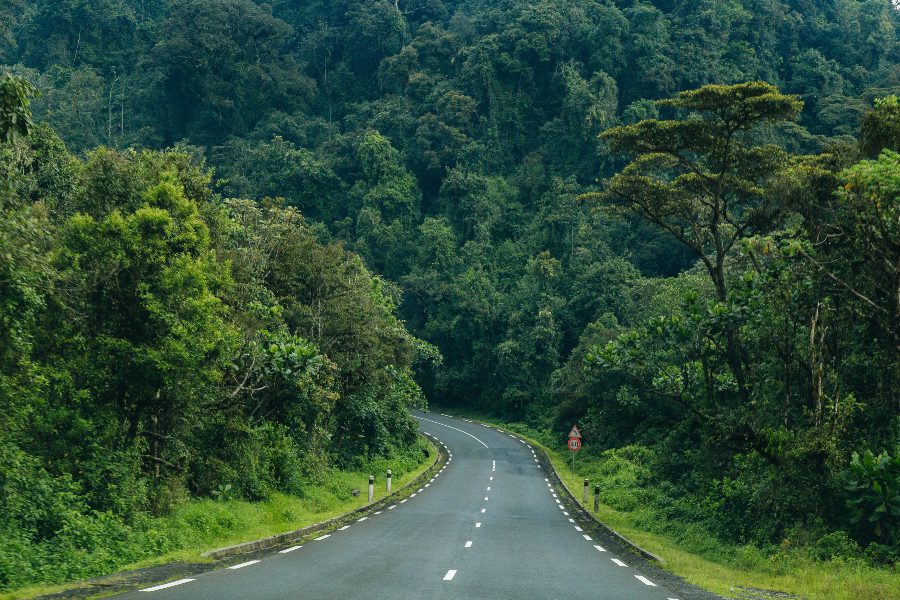We need to talk about the genocide in Rwanda. Yesterday we visited the Kigali Genocide Memorial here in Kigali.
A place of remembrance and learning. It is also a resting place for 250,000 people who lost their lives during the genocide.
We may earn affiliate commissions from websites we link to, at no cost to you. Click here for details.

The Rwandan genocide was set into motion because a jet-carrying Hutu president Habyarimana, was shot down on April 6th.
Government-aligned forces used Habyarimana’s death as an excuse to begin a campaign of slaughter against the minority group of Tutsis they had been planning for a while.
The genocide in Rwanda began the next day, on April 7th.
The genocide in Rwanda was a systematic campaign by the Hutu ethnic majority aimed at wiping out the minority Tutsi group.
Firstly, it’s estimated that 800,000 to 1 million people have been slaughtered in just 100 days. Secondly, the killing was systematic, planned, fast, and brutal. Machetes or blunt objects have killed most people. Many were killed by someone they knew.
As a result, women were raped, children were massacred…and the world watched. In just 100 days, every 7th person in Rwanda was dead.
That is five times the killing rate that occurred during the Nazi Holocaust. Just let that sink for a minute.
To explain it, we need to go back in history. Liberia and Ethiopia are the only African countries that have never been colonised. For the rest of the continent, colonialism is not just a history; it has affected each country differently. We have learned a lot about the impact here during our travels for the past year.
When it comes to Rwanda, it was the colonialists who created a society with a ticking bomb. Rwanda was first a former German colony, but after WW1, it became a colony of Belgium. Belgians split the society into two groups: Tutsis and Hutu.
It is important to note that Tutsi and Hutu were the same people before they were “defined by the Belgians.” The split between the Hutus and Tutsis resulted from not religious or cultural differences but economic ones.
Those who farmed the crop were to become known as “Hutus”, and those who tended to livestock became “Tutsis”.
Most Rwandans were Hutus. Gradually, these class divisions became seen as ethnic designations. Belgians went even further and forced Rwandans to identify as Tutsi or Hutu in their ID cards. This is another example of a “divide and conquer strategy ”.
Tutsis were given higher positions in the country. Rwanda gained independence; consequently, the minority of Tutsis (15%) are seen as a symbol of the colonial era. The tensions were high, and violence did flare up over the years.
But nobody could imagine the events here in 1994 – the year of the genocide in Rwanda.

The simple answer is yes. The evidence of the slaughter became indisputable. However, the international community did nothing.
The United States actively discouraged the UN Security Council from authorizing a more robust deployment of troops. In short, there’s a good chance the UN could have done something.
General Dallaire believes that with an extra 5,000 troops and a stronger UN mandate, he could have saved “hundreds of thousands”.
Today, 25 years after the genocide in Rwanda, Rwandans are living with the trauma of this horrific event. Forgiving the perpetrators is the message in the stories of survivors. Moreover, breaking the circle of violence between these two groups living side by side is the solution. Intermarriage is encouraged.
We urge you to look up to learn more about genocides across the world. To clarify, genocide is a deliberate, coordinated plan to destroy a group of people, usually members of a specific national, ethnic or religious group. Here is a list of genocides beyond the genocide in Rwanda:

The economy of Rwanda has been progressing rapidly due to successful governmental policy when it comes to industrialization. Since the early 2000s, Rwanda has witnessed an economic boom that is improving the living standards of many Rwandans.
We have visited Rwanda and neighbouring Uganda twice to trek to see the gorillas and the less explored Burundi.
The difference was noticeable, and while we listened to different options regarding the politics of Rwanda, the quality of living seemed much higher here.
We’ve got some comprehensive blogs about travelling in Africa – what a massive continent this is! Have you ever wondered how many countries in Africa are there? 54 or 55? We cover them in depth in our Ultimate Africa Bucket List.
Don’t miss our recap of our travels across West Africa in 2019 for even more helpful tips. If you’re unfamiliar with this region’s cuisine, we wrote a post about the 8 most delicious West African foods we tried along the way.
It’s worth reading these 17 ESSENTIAL Things to know before travelling to West Africa, and our ESSENTIAL Packing List for Africa may be helpful to you.
✈️ Flights: We use Skyscanner to book cheap flights worldwide.
🏨 Accommodation: Booking.com is our preferred platform for booking hotels and accommodation.
🏥 Travel Insurance: We recommend Heymondo (Get 5% off Heymondo) & SafetyWing
🚌 Transportation: Trainline is the best website to reserve trains. We use Omio to book transport worldwide. For travel in Asia, we use 12Go.
🚘 Car Rental: We use DiscoverCars to book rental cars worldwide.
👫 Group Tours: G Adventures OR compare multi-day tours worldwide with Tourradar.
📸 Day Tours & Trips: GetYourGuide & Viator are the only two platforms you need.
📚 Lonely Planet: The Best Range of Travel Guides & Ebooks, and FREE Shipping! (use code RACHELDAVEY10 for a 10% discount)
🎒 Luggage: Osprey Farpoint 40L Backpack or Samsonite Luggage Range.
🛄 What to Pack: Don’t forget your Universal charger and a good power bank. To help you pack the essentials, here is our ULTIMATE Packing List for all Travellers.
🐶 Become a House Sitter: Join Trusted Housesitters and enjoy FREE accommodation worldwide. Use our invite to receive 25% off your new membership.
💰 Send Money Anywhere: WISE & Revolut are the best online accounts that let you send money, get paid, and spend money internationally. Both are so easy to use and way cheaper than any bank transfer.
📶 Stay Connected: Airalo eSIM allows you to get connected the moment you land at your destination, and you can avoid those expensive data roaming charges. We LOVE this product! Use promo code NOMAD15 for 15% off ALL eSIMs (new Airalo users only) OR use NOMAD10 for 10% off ALL eSIMs (for existing Airalo users)
✅ Check out our Travel Gear and Travel Resources for more valuable tips to save you money!